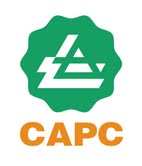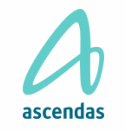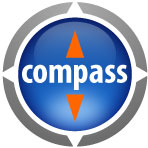Overview
The program starts with a pre-workshop survey that will help identify work communication and behavior needs that may be helping or hindering the change effort. The participants should ideally be 20 people or less and are in positions where they can impact change initiatives. This course uses a combination of lecture, experiential learning activities and debriefs to help the participants get the most of the content. The program may be adjusted as needs are presented during pre-work survey. The general design of the course is built on the concept of FACE, ACCEPT and PUSH change.
| Session | Content | Objectives |
| Alignment | Pre-survey interviews | Make sure that the survey content meets the objectives of the key stakeholders. |
| Survey | Survey creation/approval Survey submitted Survey gathered | Once all involved agree upon the content and methods for the survey then then it administered. Surveys are then gathered for analysis. |
| Re-alignment | Review of Survey findings | Presentation to the stakeholders of the survey findings. Workshop content can be adjusted according to needs identified in the survey. |
Day 1
| Session | Content | Objectives |
| Executive Welcome | Executive presentation | Share the vision and expectations for the program. Give the participants some direction and manage expectations. |
| Warm Up | The “potholder” activity Debrief | To set the tone for the workshop we begin with a simple activity. As participants become familiar with it they are submitted to an unexpected change. The resulting confusion, frustration and other emotions create a good learning. The key mindset of change is to challenge our assumptions and face things the way they are, not the way we think they should be. |
| Start with End | Vision Setting Macro-Gap Analysis Urgency The Change Formula | The opening session sets the tone for the rest of the program. In this session we focus on what we are trying to achieve from a macro perspective and begin creating a vision of what the organization would look like after the change initiative is implemented. We also become familiar with the change formula, to which we will refer throughout the program. Ideally this session would also include a message delivered from top management on the need and urgency of the change initiative. |
| Change Analysis | Force Field Analysis Stakeholder Analysis Resource Analysis Timelines Resistance Stakeholder Engagement Communications Plan | To perform well in change it is important to know where we are and where we need to be. This builds on the previous session by going into the “nuts and bolts” details of the change. We look at both the “hard” and “soft” aspects of the change. In this session we identify why people resist and look at some strategies to overcome them. We then do an engagement analysis of the stakeholders and who may resist and why. Only after we have done this can we create a communications plan that is customized to our own realities. We then look at practical ways to handle change. This session and the previous one are focused on helping us FACE change. |
| Opportunity in Chaos | Case studies Class presentations | Fundamental to change of mindset is recognizing the opportunities in the changes. Successful leadership requires more than just minimizing damage, it means being proactive and recognizing the opportunities as they present themselves. In this session we look at possible change scenarios and we explore the opportunities that they present. This is a good way to end the day as we focus on the healthy approach to ACCEPT change. |
| Summary | Review of the Day’s Learning | Review of the learning and preview of Day 2 |
| Session | Content | Objectives |
| Recap | Review of Day 1 | Quick review of Day 1 and how it will link to Day 2 learning. |
| Working Cross-Level | Islands simulation Debrief | As the participants in this workshop are in the unique position of pushing change efforts while working with people at different levels of the organization we need to know that each level has its unique challenges and opportunities. To begin day 2 we do a fun activity that reminds the participants of the different challenges, perspectives and feelings the various groups of people they will work with are experiencing. |
| What You Do | Behavior Analysis | On Day 1 we identified what needed to be done to make this initiative work. Only behavior changes are vital to success and only when we know which ones we need to focus on can we succeed. The following sessions will focus on how to PUSH change. |
| Personal Levers | Motivation Skills | In this session we focus on the individual level . Motivation may be the most critical of all the levers and in this session we talk about creating a “point of no return” and helping the stakeholders discover their own value in the change initiative. Beyond having the desire we also need to have skills. We do analysis of what skills may be lacking and how to ensure they are acquired in time. |
| Social Levers | Power of Peers Power of Authority | In this session we analyze the social landscape of the stakeholders in the initiative. Is this a fertile environment for our type of change? What steps need to be taken to improve the landscape? Are those with authority and/or resources going to help our hinder our effort? |
| Non-human Levers | Policy Levers Environment Levers | Our behaviors are largely effected by our environment and the political system we operate in. In this session we look to analyze how these levers are giving us our current results and how they may need to be modified to get the results we are looking to achieve from the change initiative. |
| Executive presentation | Final Action Planning Presentation to executive | To ensure the best outcome of the workshop the participants will present their learning and group action items to the executive. |
| Wrap Up | Summary of two days Looking forward | Review of two days of learning. Ideally an executive caps the program with a speech. |











